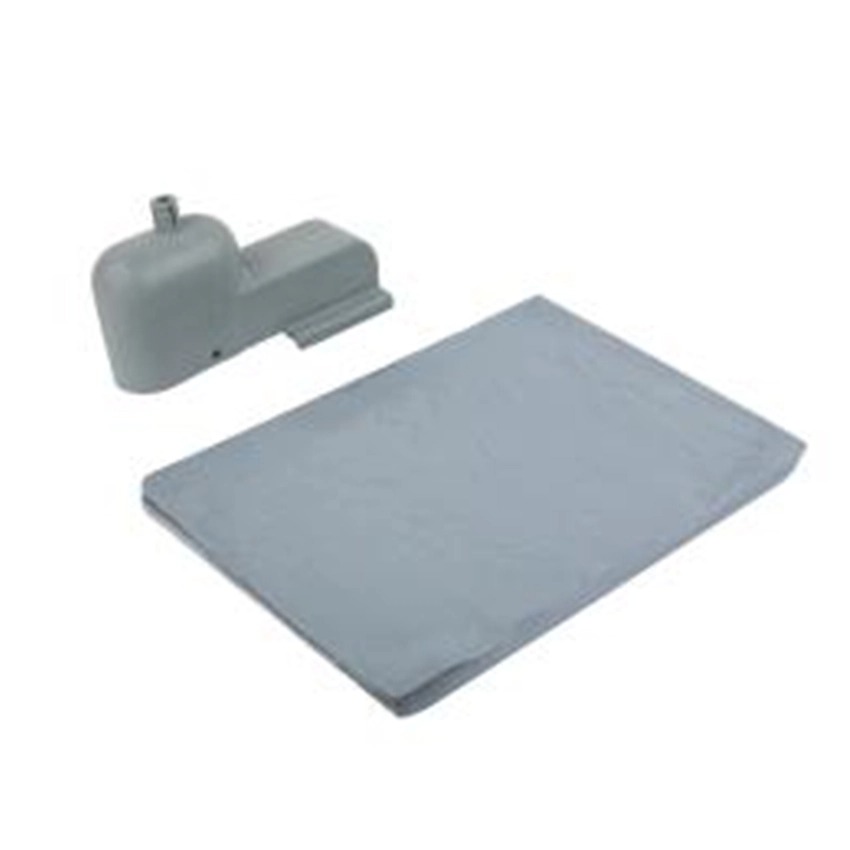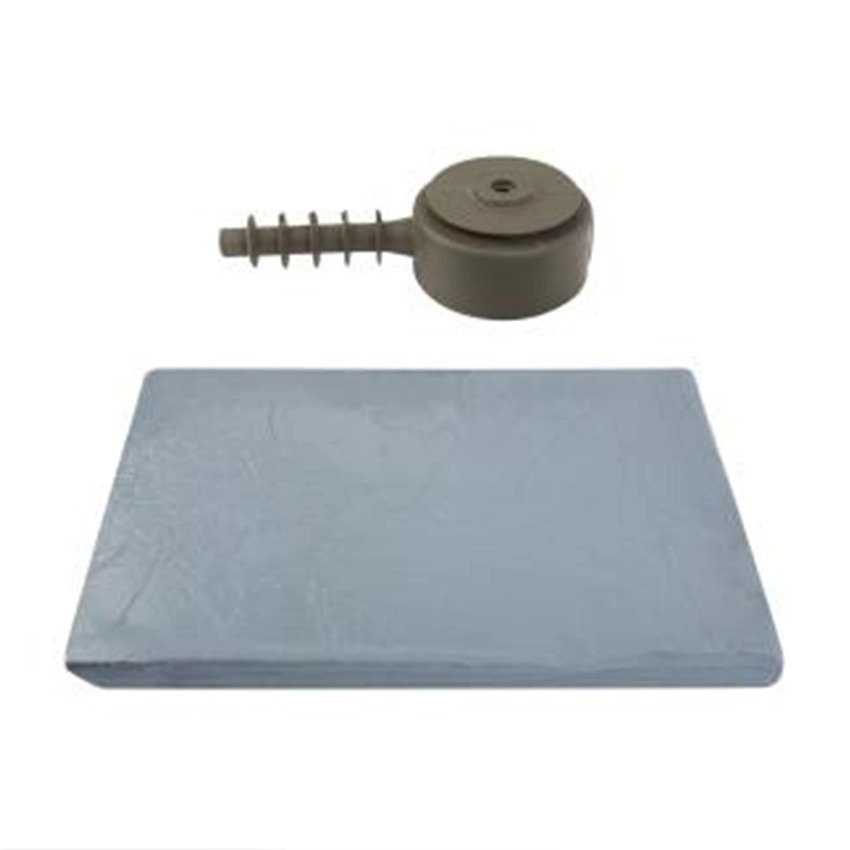Views: 176 Author: Site Editor Publish Time: 2025-09-03 Origin: Site











In the modern world of electrical infrastructure, reliability and performance are paramount. As the demand for uninterrupted electricity increases, materials and components that once seemed standard are now being replaced by advanced innovations. One such innovation is composite insulator silicone rubber, which has become a vital material for high-voltage insulators in transmission and distribution systems. But what makes it such a critical choice? Unlike traditional porcelain or glass insulators, silicone rubber offers unique advantages in durability, hydrophobicity, and mechanical strength. This material has redefined how engineers and power companies approach insulation challenges, especially in harsh climates and polluted environments. From resisting ultraviolet degradation to minimizing leakage currents during wet conditions, silicone rubber-based composite insulators demonstrate exceptional resilience. Beyond its physical properties, its lightweight nature reduces installation costs and structural stress on towers. The increasing adoption of silicone rubber for composite insulators underscores its proven ability to withstand both environmental and electrical stresses. This article explores the role, benefits, and frequently asked questions about composite insulator silicone rubber, showing why it has become indispensable in today’s power systems.
The core question arises: why has silicone rubber become the preferred choice for composite insulators compared to porcelain or glass? The answer lies in its unique chemical and physical properties. Silicone rubber maintains hydrophobicity, meaning it resists water film formation even under heavy rainfall. This property minimizes surface leakage currents, thereby reducing flashover risks—a significant concern in power systems. Additionally, the elasticity of silicone rubber enables insulators to absorb mechanical shocks, vibrations, and sudden temperature variations without cracking. Unlike brittle porcelain, silicone rubber’s polymeric structure ensures long-term flexibility. Furthermore, its resistance to ultraviolet radiation and ozone degradation ensures durability even in regions with extreme sunlight exposure. Engineers also value its lightweight nature; silicone rubber insulators weigh significantly less than porcelain equivalents, simplifying installation and reducing tower load stress. These advantages translate into longer service life and lower maintenance requirements. Over decades of field application, silicone rubber has consistently outperformed traditional alternatives, making it the optimal material for reliable, safe, and cost-effective composite insulators.

Environmental conditions often dictate the service life of an insulator. In regions with high humidity, coastal salt deposits, desert sandstorms, or industrial pollution, traditional insulators frequently require frequent cleaning or replacement. However, composite insulators made of silicone rubber excel in these demanding environments. Their hydrophobicity ensures that contaminants such as salt, dust, or industrial particles do not adhere firmly to the surface. Even when contamination occurs, the silicone rubber allows water to bead and roll off rather than forming conductive films. This drastically reduces the risk of flashover. Moreover, the silicone rubber surface demonstrates a “self-healing” property—when hydrophobicity decreases due to contamination, low molecular weight siloxanes migrate to the surface, restoring water-repellent characteristics over time. This feature significantly reduces maintenance costs for power utilities. Additionally, silicone rubber insulators resist erosion and tracking, which are common issues in polluted or coastal zones. Their durability against freezing temperatures and high thermal cycling also ensures operational stability in both tropical and arctic climates. As a result, composite insulators with silicone rubber are highly trusted for deployment in challenging terrains where performance cannot be compromised.
The growing adoption of composite insulator silicone rubber is not coincidental—it results from a combination of distinct advantages that surpass traditional insulator materials. Some of the most significant benefits include:
| Feature | Advantage in Composite Insulator Silicone Rubber |
|---|---|
| Hydrophobicity | Maintains water-repellent surface, reducing flashover risk |
| Lightweight | Easier installation, reduced tower load, lower logistics cost |
| Flexibility | Resistant to cracking under mechanical stress and temperature shifts |
| UV & Weather Resistance | Long service life even in high sunlight or ozone environments |
| Self-Healing Surface | Restores hydrophobicity after contamination |
| Reduced Maintenance | Fewer cleaning cycles, lower overall operational costs |
These advantages collectively improve reliability, reduce maintenance budgets, and extend operational lifespan. For power companies, these benefits translate into improved return on investment. For engineers, the assurance of consistent performance in diverse conditions reduces the complexity of grid management. In both cases, silicone rubber’s role in composite insulators is clear: it is a superior material delivering both short-term efficiency and long-term resilience.
For decades, porcelain and glass were the standard insulator materials. Their main strengths included high mechanical strength and proven performance in dry climates. However, they also came with limitations: weight, brittleness, and susceptibility to surface contamination. Composite insulators with silicone rubber emerged to address these limitations. Unlike porcelain, silicone rubber insulators are significantly lighter, reducing transportation costs and making them easier to handle in remote areas. Their polymeric composition provides flexibility, reducing the risk of breakage during installation or storms. Most importantly, their hydrophobicity outperforms both porcelain and glass in reducing leakage currents under wet or polluted conditions. This means that silicone rubber insulators maintain electrical performance even without frequent cleaning, unlike traditional counterparts. Moreover, their resistance to vandalism and lower risk of catastrophic shattering provide additional safety benefits. While porcelain and glass still serve specific roles, silicone rubber has proven to be more reliable and cost-effective for most modern transmission and distribution projects, making it the material of choice for forward-looking power systems.

Q1: How long can composite insulator silicone rubber last in the field?
These insulators often provide reliable service for over 25–30 years, depending on environmental conditions and proper installation practices. Their durability is enhanced by UV resistance and self-healing surface properties.
Q2: Is silicone rubber environmentally friendly?
Yes, silicone rubber is non-toxic and chemically stable. Unlike some materials, it does not release harmful substances during operation, making it environmentally safe.
Q3: Can silicone rubber withstand extreme weather conditions?
Absolutely. From freezing arctic temperatures to scorching desert climates, silicone rubber maintains performance without losing flexibility or surface properties.
Q4: Does silicone rubber require special maintenance?
Maintenance requirements are minimal compared to porcelain insulators. In most cases, natural rain is sufficient to wash away loose contaminants, significantly reducing cleaning frequency.
Q5: Are silicone rubber insulators cost-effective compared to porcelain?
While the initial investment may be slightly higher, long-term cost savings from reduced maintenance, lower transportation costs, and extended lifespan make them highly cost-effective.
The global shift toward composite insulator silicone rubber is driven by clear economic and operational advantages. For power utilities, downtime caused by insulator failures can result in substantial financial and reputational losses. Silicone rubber reduces these risks by offering consistent reliability under diverse environmental conditions. The reduced weight not only simplifies logistics but also allows the use of lighter support structures, cutting infrastructure costs. Maintenance crews benefit from fewer site visits, as these insulators retain hydrophobicity and self-cleaning ability for extended periods. Additionally, the improved safety profile—owing to reduced risk of catastrophic breakage—further strengthens their appeal. As energy networks expand and integrate renewable power sources, the need for reliable insulators becomes even greater. Investing in silicone rubber-based composite insulators is not just about adopting new technology; it is about ensuring a resilient, cost-efficient, and future-ready electrical grid. In summary, these insulators represent a balance of performance, durability, and sustainability, making them the intelligent choice for modern power utilities worldwide.